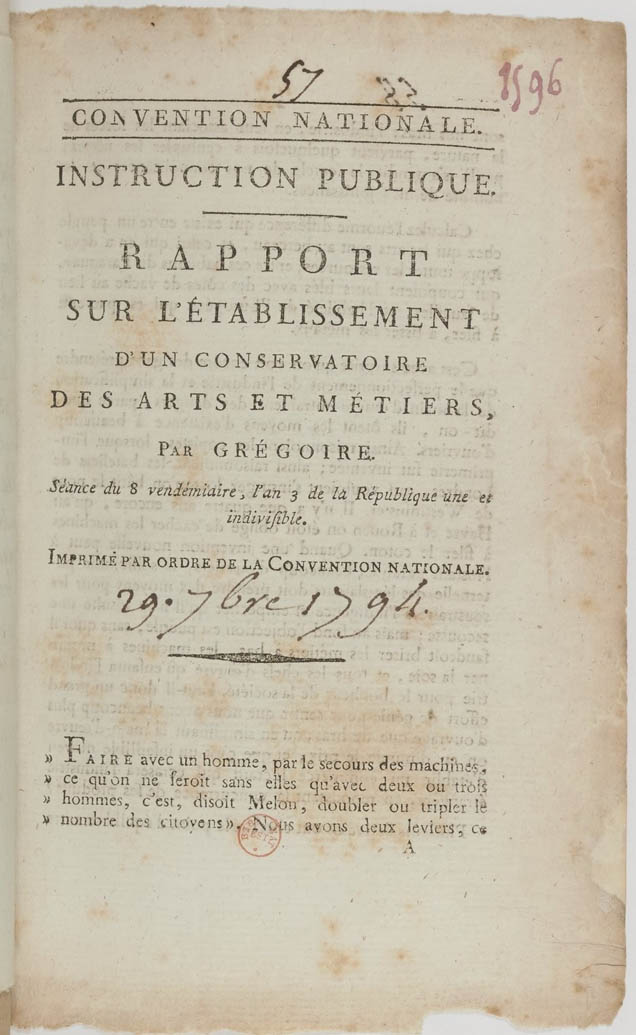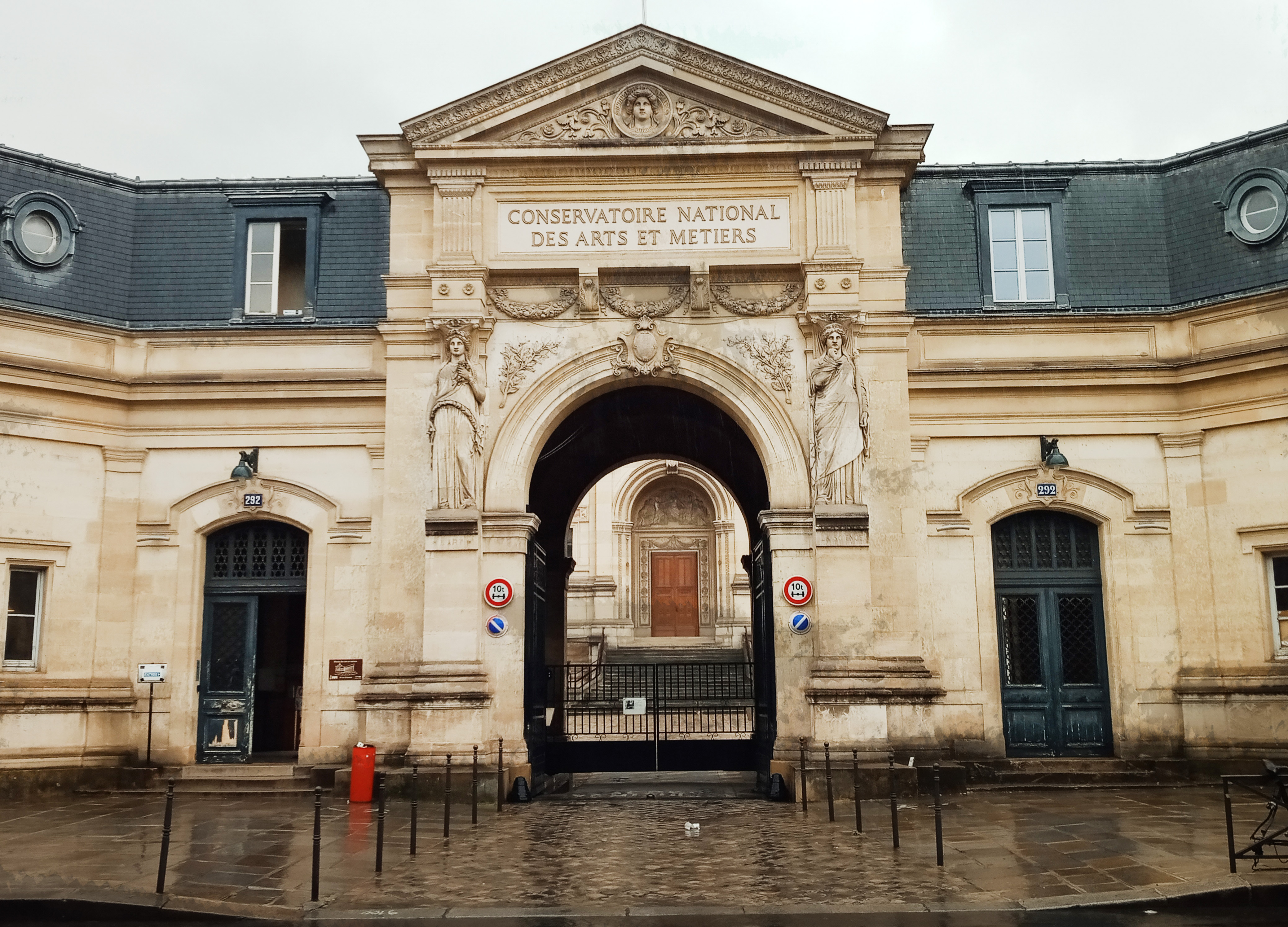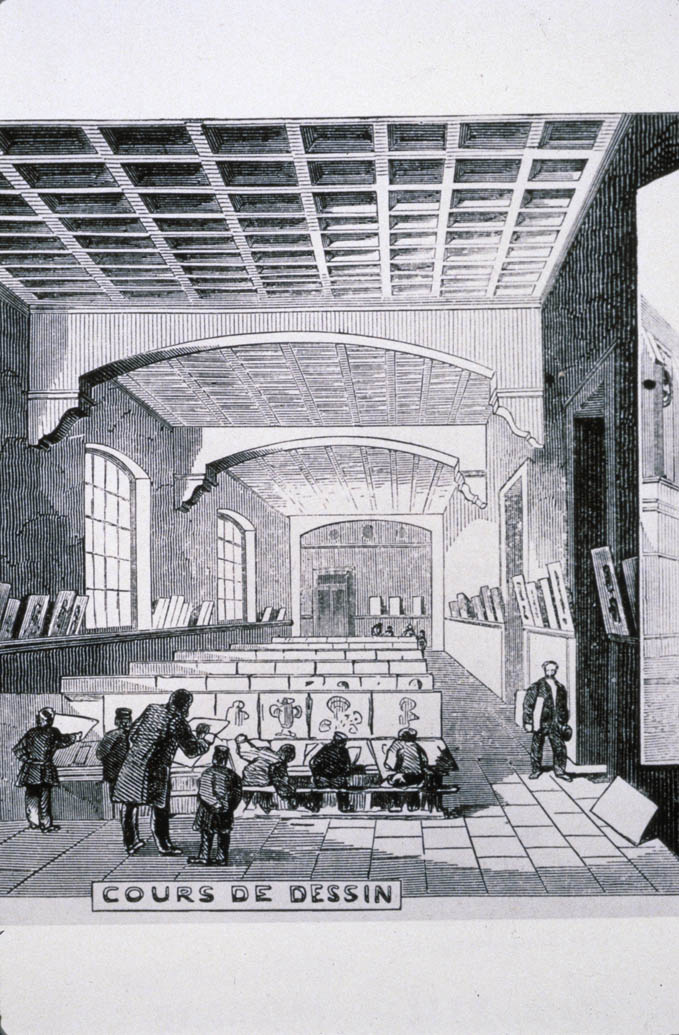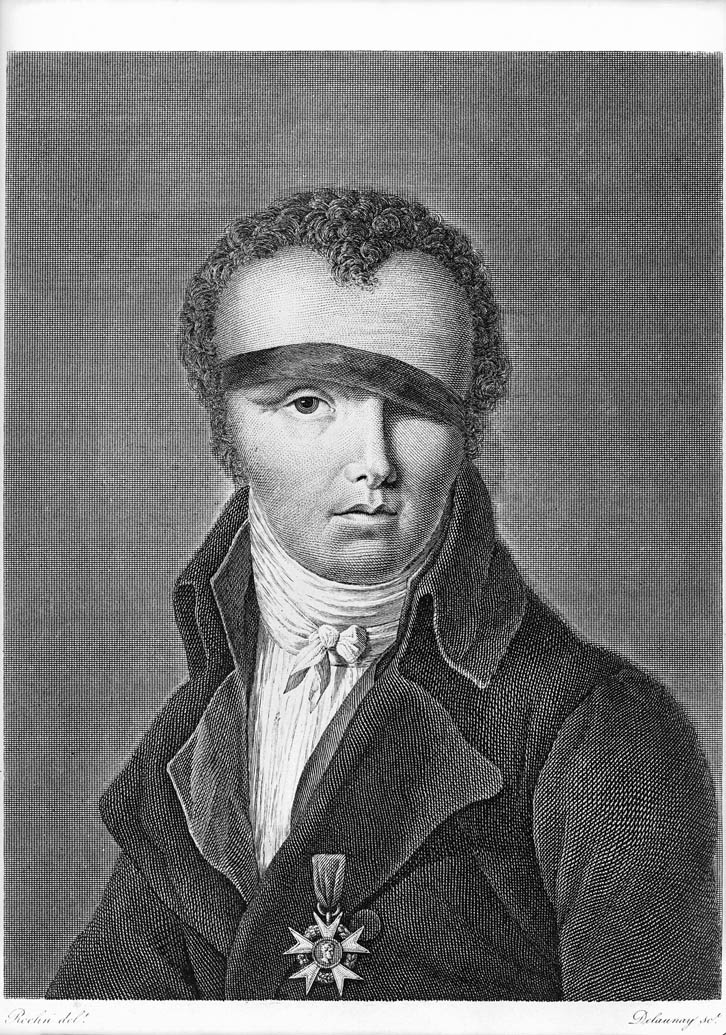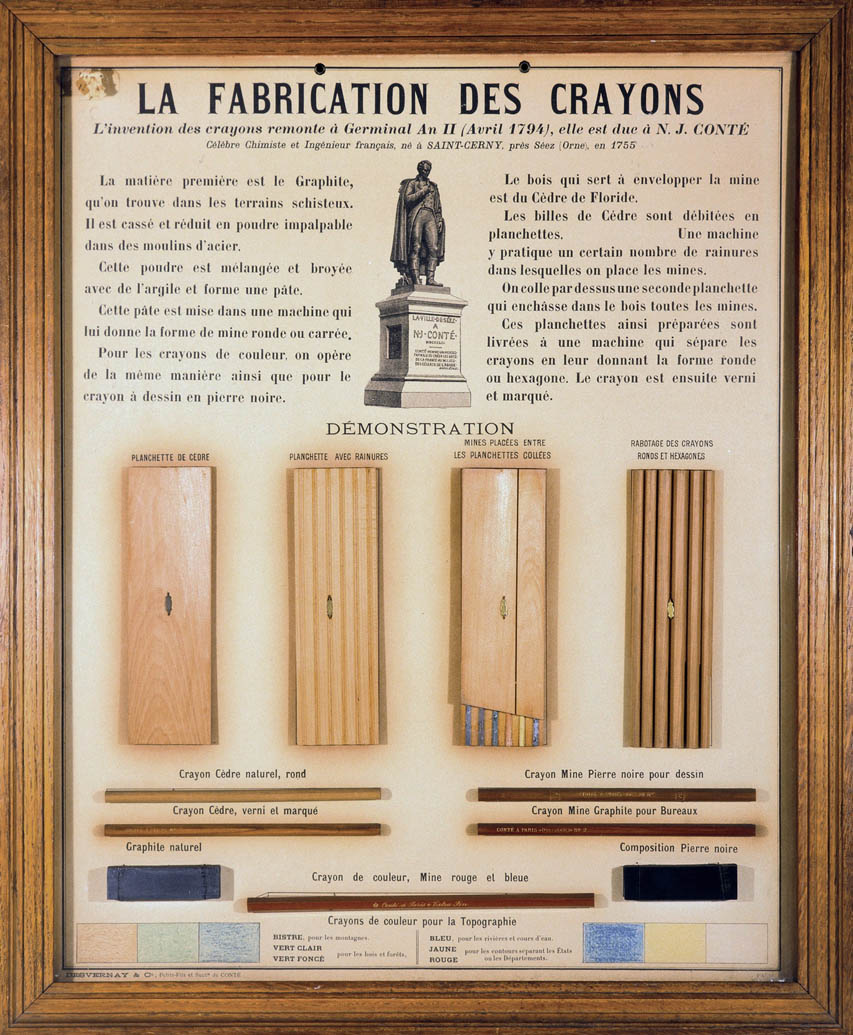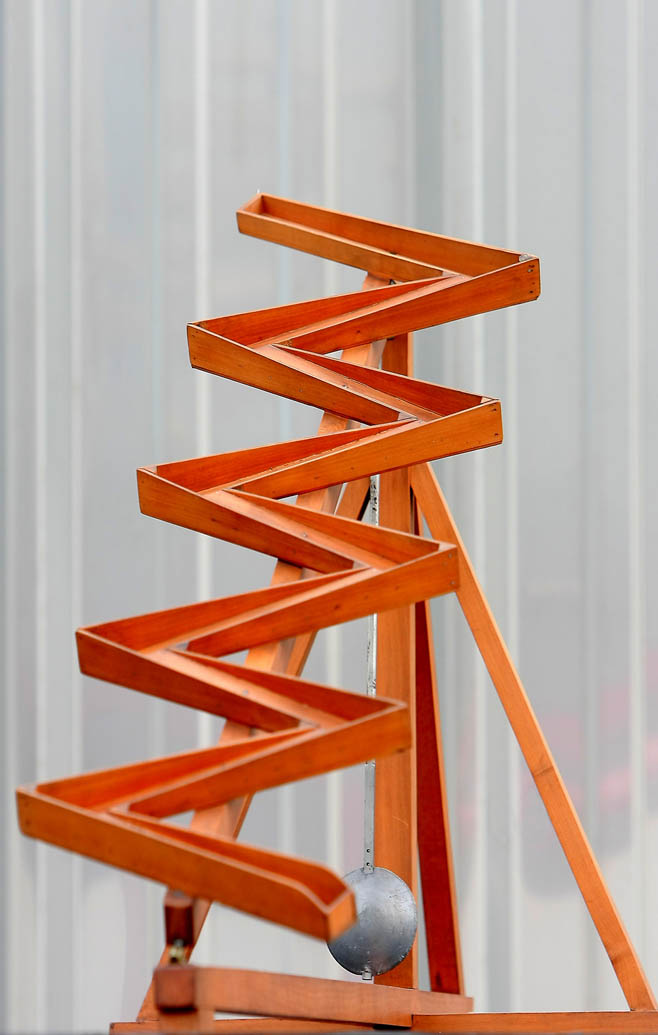Make Science Useful for All
During the Revolution, professional education was seen as a way for emancipation: it was thought that through an education a person could transform everyday life. In 1794, Father Grégoire was put in charge of creating the Conservatoire des arts et métiers: a place “where all of the newly invented and recently improved tools and machines would be collected and put on display.” The idea was to simultaneously galvanize French industry as well as make technical knowledge available to all. In 1798, the Conservatory moved into the former Saint-Martin-des-Champs priory.
Location
ItineraryArts et Métiers Museum, 60 rue de Réaumur
Suggestion
Temple and its Neighborhood
The Bourrienne Hotel and the “Marvelous Madame Hamelin”
To find out more…
An active education
The Conservatoire des arts et métiers was the Enlightenment’s dream! Open to simple artisans or laborers who wanted to learn about the latest machines, the Conservatory was a place for learning: here, people could learn about useful sciences, for example. In addition to the mechanical workshop, the draughtsman office and the library, galleries were opened in 1802: guides explained to visitors how the machines functioned. As the deputy Charles-Jean-Marie Alquier stated: “those who come to the Conservatory will all be laborers, and therefore the inventions should not be obscured through abstract or scientific discourse: they prefer being shown how something works rather than hearing explanations. The machine, set in motion before their eyes, is often the best kind of demonstration for them.”
Renowned men of science, such as Nicolas-Jacques Conté, Alexandre-Théophile Vandermonde and Joseph Montgolfier, thereby explained how the machines from the collections worked, the innovations that they contained and the tools useful for their construction and operation.
Nicolas-Jacques Conté: a scholar and professor during the Revolution
His name is associated with a famous brand of pencils. However, before he was an inventor, Nicolas-Jacques Conté was a scholar who was staunchly involved in the French Revolution. With other scholars, he attempted to develop airships in order to use them in the war against the foreign powers that wanted to stop the French Revolution. In 1794, he was named a member of the Conservatoire des arts en métiers along with the mathematician Vandermonde and the physicist Montgolfier. That was when he invented his famous pencil, before participating, as a scholar, in Bonaparte’s Egyptian expedition, in the hopes of civilizing and educating Egyptian populations with European techniques: resulting from the Revolution, universal intentions turned into a colonial experiment.


